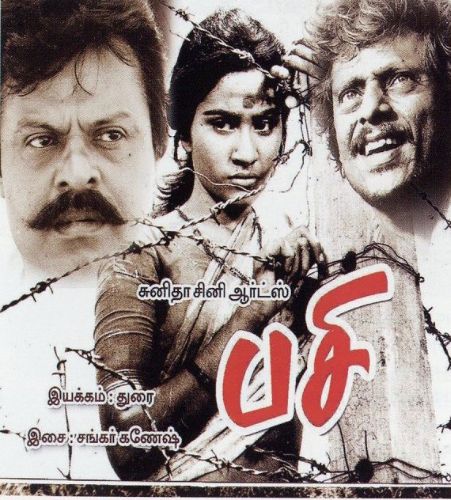This section is for paid subscribers only. Our subscription is only $3700/- for one full year.
You get unlimited access to all paid section and features on the website with this subscription.
Subscribe to read full article
This section is for paid subscribers only. Our subscription is only $37/- for one full year.
You get unlimited access to all paid section and features on the website with this subscription.
Not ready for a full subscription?
You can access this article for $2, and have it saved to your account for one year.
- Release Date1974
- GenreDrama
- FormatB-W
- LanguageTamil
- Run Time162 min
- Number of Reels16
- Gauge35 mm
- Censor RatingU
- Censor Certificate Number3310
- Certificate Date10/12/1974
This story, unusual in Tamil filmic tradition, revolved around a destitute woman and her attempts to escape from a brothel and lead a normal life. Sita is brought to Madras by a confidence trickster and is sold off to a whorehouse. Muthu, a young man from a small town on a business trip to Madras, visits the brothel with his friends. He is shocked by what he sees and takes pity on Sita. Later, he proposes marriage to Sita; she agrees after some initial hesitation. Muthu brings her home where Sita wins the love of Muthu's mother. The pimp who first sold her to the brothel shows up in this small town and life gets complicated for Sita. He exposes Sita's past and the film ends with her suicide.
This was Durai's first film. Restricting the number of songs to just two and avoiding dances and comedy sub-plots, he maintained the film's dramatic tension. The money-lender and his young wife with a penchant for pornography, and the housewife who dreams of getting her daughter a break in the movies as a singer, all supported the narration. Even minor characters like Kanagu, the vegetable vendor, and Sambandam, the cycle mechanic, were sharply etched; a refreshing break from the archetypal characters of Tamil cinema. The Tamil spoken by characters, like the merchant and the mechanic, had a definite regional flavour which gave the film a certain authenticity; so did their caste identities which were made explicit. The filmmaker's compassion came through in the non-judgmental manner in which he portrayed characters like Kanagu who waits patiently for Sambandam to marry her and Sita, the prostitute, who falls in love with Muthu. The filmmaker named his heroine Sita, after the legendary symbol of Indian womanhood from the epic, Ramayana.
Except for the events that took place indoors, much of the film was shot outdoors. Durai's style of narration was direct and straightforward. By giving the music a secondary place, he emphasized on the story: the film's content gets priority in the presentation. In the climax, he used melodrama rather effectively, though he also relied on usual props like coincidence and fistfights in the sequence.
[from the book The Eye of the Serpent by S Theodore Baskaran]
Cast
Crew
-
BannerShri Panduranga Productions
-
Director
-
Producer
-
Music Director
-
Lyricist
-
Cinematography
-
Writer









.jpg)



